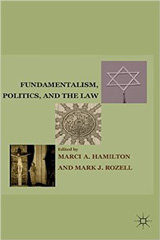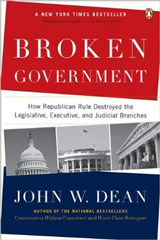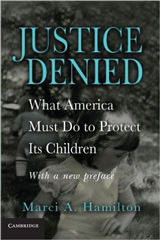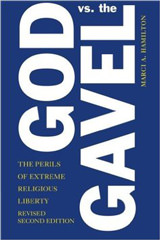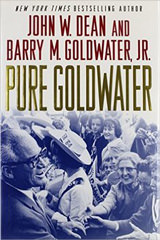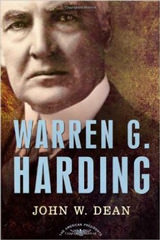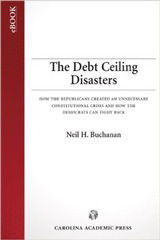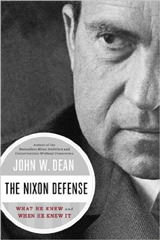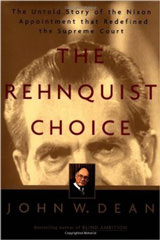In Part Two in a two-part series of columns, Justia columnist and Cornell law professor Sherry Colb continues her analysis of an important recent Supreme Court decision, Howes v. Fields, regarding the right to be read one’s Miranda rights—the familiar set of rights that begins with “You have the right to remain silent.” In Part One, Colb focused on a set of Supreme Court precedents that are relevant to the Howes case. Here, in Part Two, Colb takes on the case that is arguably the most relevant of all to Howes: Maryland v. Shatzer. Shatzer, as Colb explains, concerns what implications a “break in custody” might have for Miranda purposes, and whether such a “break in custody” can occur while a person is incarcerated. Colb goes on to explain and critique the Howes Court’s approach to related Miranda issues. She takes sharp issue, in particular, with what she characterizes as a deeply unrealistic view of prisoners’ lives in prison, on the part of the Court.
Justia columnist and Cardozo law professor Marci Hamilton comments on Massachusetts’s recent movement toward reforming the statutes of limitations (SOLs) for child sex abuse. In addition to covering the Massachusetts situation, Hamilton also argues that the tide is turning, nationwide, on the SOL issue. In particular, she cites progress in New York, Pennsylvania, Wisconsin, and Hawaii. Hamilton also takes strong issue with the Catholic Bishops’ contention that paying out child sex abuse claims will bankrupt them. Finally, Hamilton observes a new development in the movement against child sex abuse, and toward SOL reform in that area: Incest survivors and clergy child sex abuse survivors, Hamilton notes, are coming together to fight abuse and seek SOL reform.
In Part One in a two-part series of columns, Justia columnist and Cornell law professor Sherry Colb comments on an important recent Supreme Court decision, Howes v. Fields, regarding the right to be read one’s Miranda rights—the familiar set of rights that begins with “You have the right to remain silent.” As Colb explains, Fields sets forth the law regarding Miranda in the context of the interrogation of persons who are already incarcerated. In this column, Colb explains the facts and outcomes of the prior Supreme Court Miranda precedents that proved relevant in Fields. In both parts of the series, she takes strong issue with the Court’s reasoning in the Fields decision—in part because she argues that the Court has a very unrealistic view of the realities of prison.
Justia columnist and Cardozo law professor Marci Hamilton comments on two significant threats to New York State’s children. Hamilton begins by noting the recent, tragic death of an infant from herpes. She notes that the infant likely contracted the disease from a mohel who performed “oral suction” on the infant after Orthodox Jewish ritual circumcision. (Oral suction is a controversial practice in the Jewish community, and has fallen out of favor with many. In ancient times, the practice was thought to contribute to hygiene, but as it was learned that it could spread disease, it was mostly abandoned. Those who still practice it typically employ a glass tube to avoid direct contact and disease transmission.) Noting that this is not the first such death to likely be associated with oral suction, Hamilton argues that this risky procedure should be banned, and notes that its religious nature provides no legal defense for those who follow the procedure. She also warns that not only the mohel, but also the parents, could be held responsible for the death, depending on what they knew about the procedure’s risks. In addition, Hamilton covers a second ongoing threat to the well-being of New York’s children: clergy child sex abuse. Hamilton contends that New York ought to follow the example of Philadelphia, when it comes to the reporting of clergy child abuse—for there, District Attorney Lynne Abraham eventually enabled justice to be done due to her grand jury investigation into the cover-up of abuse.
In Part Two in a two-part series of columns, Justia columnist and Cornell law professor Sherry Colb continues her commentary on the Supreme Court’s recent GPS (Global Positioning System) decision, which concerned the scope of the Fourth Amendment's protection against unreasonable searches and seizures. As Colb explains, the Court was unanimous regarding the decision’s result: The police had, indeed, performed a Fourth Amendment search or seizure by—without a warrant—attaching a GPS device to a suspect’s car, and then using the device to monitor the car's movements over a four-week period. Yet, as Colb points out, the Court was divided as to the reason for the result, offering two alternative rationales for the case's outcome. Here, in Part Two, Colb explains why Justices Scalia and Alito—both deemed to be conservative—nevertheless differed regarding what the proper rationale for the Court’s unanimous ruling ought to be. Colb argues that Justice Alito’s rationale is the more compelling of the two.
In Part One in a two-part series of columns, Justia columnist and Cornell law professor Sherry Colb comments on the Supreme Court's recent GPS (Global Positioning System) decision, which concerned the scope of the Fourth Amendment's protection against unreasonable searches and seizures. As Colb explains, the Court was unanimous regarding the decision’s result: The police had, indeed, performed a Fourth Amendment search or seizure by—without a warrant—attaching a GPS device to a suspect’s car, and using the device to monitor the car's movements over a four-week period. Interestingly, though, Colb points out that the Court was divided as to the reason for the result—offering two alternative rationales for the case’s outcome. Here, in Part One, Colb explains the seminal precedent of Katz v. United States, and other key Fourth Amendment precedents, including one that involved tracking a car with a beeper device. In Part Two, appearing here on Justia’s Verdict next Wednesday, February 15, Colb will consider why this case divided Justices Scalia and Alito.
Justia columnist and former counsel to the president John Dean describes and comments on the process by which former President Richard Nixon’s previously sealed grand jury testimony (along with related materials) was revealed in July 2011—a process in which Dean himself played a key role. Dean gives great credit for the unsealing both to Public Citizen's Litigation Group, headed by Allison Zieve, which took the case; and Judge Royce Lamberth, who made the ruling that led the grand jury testimony and related materials to become public—as had occurred earlier in famous cases such as those of the Rosenbergs and Alger Hiss, based on the rulings of the U.S. Court of Appeals for the Second Circuit. Dean also notes that this, and other material that is still being transcribed, encompass the last real secrets of Watergate.
Justia columnist and Cornell law professor Sherry Colb comments on a recent study—reported in The National Law Journal and described in greater detail in the NYU Law Review—that showed that jurors in criminal cases have trouble distinguishing between “knowing” and “reckless” states of mind. Colb contends that the fault here likely lies not with the jurors, but with the criminal law itself—which, she contends, is ambiguous in important ways when it comes to defining “knowing” and “reckless” states of mind. Colb notes that jurors do not seem to have much trouble understanding two other criminal law states of mind: “purpose” and “negligence,” the definitions of which do not display the same kind of ambiguity. She then details the ambiguities that plague the definitions of “knowing” and “reckless” states of mind. Colb calls upon legislatures to resolve those ambiguities by better defining these states of mind in their criminal statutes—and by doing so in such a way that jurors will readily understand the definitions. Colb points out that as long as these states of mind’s definitions remain ambiguous for jurors, the criminal law will be unfair: Based on the way the jury resolves the ambiguity in applying the law, two defendants who committed identical acts may still face radically different sentences.
Justia columnist and Cornell law professor Sherry Colb comments on a little-known but significant feature of New York abortion law: It defines self-induced (and other) abortion as a crime, when the woman at issue has been pregnant for more than 24 weeks (the estimated time of fetal viability), unless an abortion is necessary to save the woman’s life. This pre-Roe law was applied recently when New York authorities arrested a woman who allegedly had completed a self-induced abortion, using an abortion tea, when she was 25 weeks pregnant. (She was arrested after a building superintendent reportedly found the dead fetus in a trashcan.) In analyzing the New York law at issue, Colb also discusses relevant background regarding the constitutional, legal, and moral status of the right to terminate a pregnancy. Among other points, Colb notes that New York’s law may prove counterproductive, in that it deters women from seeking emergency care related to a post-viability self-induced abortion, for fear that revealing the abortion to healthcare providers will lead to prosecution. She also points out that it is odd that the woman in question is being charged under the anti-self-inducement law in particular, when at the time the abortion occurred, any kind of abortion would have been illegal, unless it was necessary to save the woman’s life. Colb looks to New York’s unique take on abortion—an approach that differs from those of both the pro-life and pro-choice movements—to provide an explanation for its unusual law.
Justia columnist and Cardozo law professor Marci A. Hamilton comments on the disturbing developments, over the course of 2011, with respect to child sex abuse. From Penn State, to Syracuse, to The Citadel, Hamilton notes, scandals broke out after child sex abuse was credibly alleged. Hamilton suggests ten key lessons we can all take from these events. Among those lessons are that organizations typically cover up the abuse; that cover-ups tend to follow the same pattern; that just one person can make a huge difference by reporting abuse but too often, no one does; that child sex abuse sadly proves to be more prevalent than we would like to think; and that legal reforms can help in important ways. Hamilton also covers the stances of Governors Corbett and Cuomo on this issue.
Justia columnist and Cardozo law professor Marci Hamilton reports on the court proceedings that occurred this Tuesday, December 13, in the Jerry Sandusky child molestation case. Hamilton notes that Sandusky waived his right to a preliminary hearing, which would have allowed him to see some of the prosecution’s evidence against him. She explains, however, that Sandusky already had a great deal of notice as to the prosecution's evidence from the grand jury report that has been issued; and that, by choosing to waive his right to a preliminary hearing, Sandusky avoided having ten alleged victims get on the stand to tell their stories. Hamilton expresses regret that, in this way, the alleged victims were silenced once again. She also explains—based on a press conference at the courthouse, held by Sandusky's attorney—what the defense will claim: that the alleged victims are only in this for the money. But as Hamilton notes, that theory seems very weak, since none of the alleged victims has filed a civil suit. In addition, Hamilton covers a defamation case that is related to the allegations of sexual abuse by Syracuse men’s basketball coach Jim Boeheim’s longtime assistant, Bernie Fine, and the congressional hearings on sex-abuse reporting.
Justia columnist and Cardozo law professor Marci Hamilton comments on the obstacles to bringing prosecutions and civil suits based upon the alleged child sexual abuse by Syracuse associate head basketball coach Bernie Fine. Hamilton explains why the first two alleged victims who came forward may not receive justice due to the New York statute of limitations (SOL) that will govern their cases, and why the third alleged victim, who says he suffered abuse in Pennsylvania, will be subject to less draconian SOLs. Hamilton argues for SOL reform in these states and nationwide, and takes on the question of whether it should matter—or will matter—to judges and jurors that the third alleged victim who came forward in the Syracuse scandal is himself facing child sexual abuse charges. Hamilton points out, regarding this issue, that child sex abuse victims disproportionately become abusers themselves—suggesting that they deserve at least some sympathy, as their own childhood abuse is likely one causal factor in their own later abuse of children. She also calls for SOL standardization across the country, so that pedophiles can no longer choose to live in the locations with the most lenient laws (via federal incentives offered to states that opt for reform, and federal penalties for those that do not). In addition, Hamilton suggests that states create SOL “windows” to help past victims of child sexual abuse whose civil claims otherwise would be time-barred confront their accusers in court and find justice.
Justia columnist and Cornell law professor Sherry Colb comments on two criminal law cases in which the U.S. Supreme Court has granted review. As Colb explains, the two cases together raise the following question: Does the Eighth Amendment’s cruel and unusual punishments ban prohibit mandatory sentences of life imprisonment without the possibility of parole (LWOP) for homicide offenses committed by fourteen-year-olds? In one case, the fourteen-year-old had suffered years of abuse and neglect, as well as severe poverty. In the other case, the fourteen-year-old apparently learned only on the way to a planned robbery that one of his accomplices was carrying a gun, and it was the accomplice who committed murder during the robbery, not the fourteen-year-old. (The fourteen-year-old was thus only charged with murder under the “felony murder” doctrine, based on his participation in a robbery that led to murder.) Colb explains that, in these two cases, the Court will need to consider the relationships among three relevant factors: (1) the capacity of an offender to behave morally; (2) the wrongfulness of the offender’s behavior; and (3) the harmful consequences of the offender’s actions. She describes the relevant prior Supreme Court precedents regarding juvenile offenders and other criminal law topics, and raises intriguing questions such as whether youth itself should be a mitigating factor to be taken into account in sentencing, in light of young teens’ demonstrably poor impulse control and susceptibility to pressure from others. Colb also covers the sentencing concepts of proportionality and discretion, and explains how they relate to these two cases. In addition, she describes—and, to some extent, challenges—the Supreme Court's “Death is different” jurisprudence, which singles out the death penalty for special notice despite the tremendous severity of an LWOP sentence, and the failure of an LWOP sentence to leave the offender hope for the future.
In the wake of the child sexual abuse scandals at Penn State and The Citadel’s camp, and within the Catholic Church and other religious institutions, Marci Hamilton suggests a better approach to the reporting and investigation of child sexual abuse claims. Hamilton argues that there should be a universal obligation to report abuse to a hotline, and that those who call the hotline in good faith, to report suspected abuse, should be legally immune to defamation claims. (False claims, however, would be penalized.) The hotline responders would then alert the appropriate agency or agencies. Hamilton also advocates strong failure-to-report penalties. She cautions, though, that a reporting obligation will not be enough; investigations must be improved too—noting that there was a 1998 report from a child’s mother about alleged Penn State abuser Jerry Sandusky, and yet, that investigation went off-track. Hamilton explains why that investigation was, and why similar investigations can be, ineffective, and she urges that investigators and others must keep in mind that empirically, children rarely lie about sexual abuse. Moreover, Hamilton notes that mandatory reporting will not only protect children, but also institutions that would otherwise have been destroyed by scandal, and now have the chance to take quick, decisive action against abusers.
Justia columnist and Cornell law professor Sherry Colb offers an interesting perspective on the controversial U.S. Supreme Court ruling in Cavazos v. Smith. There, the High Court summarily reversed a decision of the U.S. Court of Appeals for the Ninth Circuit. The Ninth Circuit had granted a writ of habeas corpus to a grandmother who had been convicted—based on questionable evidence—of killing her grandson by shaking him violently. In her column, Colb focuses on two key issues that the case raised: (1) the extreme deference to state courts demanded by the Antiterrorism and Effective Death Penalty Act of 1996 (AEDPA); and (2) the Supreme Court’s limited role in reviewing decisions of the lower courts. Colb also explains why there may be genuine doubts here as to the guilt of the grandmother. For instance, she points out that medical knowledge in the years between the trial and today has cast doubt on the prosecution experts’ conclusions ruling out innocent explanations of the autopsy evidence. The Supreme Court, however, seems to have believed that the U.S. Court of Appeals for the Ninth Circuit, in ruling for Smith, was substituting its own judgment for that of the jury—leading the High Court to summarily reverse the habeas corpus grant.
Justia columnist and U.C., Davis law professor Vikram David Amar comments on a recent, rare Supreme Court summary reversal. A summary reversal occurs when the Court summarily grants review and then reverses the federal circuit court’s decision without the benefit of full written briefs and oral arguments. In this instance, Amar suggests that the Court may have opted for summary reversal in light of its apparent annoyance with the U.S. Court of Appeals for the Ninth Circuit. In a criminal case in which a grandmother was accused of shaking her grandson to death, her defense was that the child died, instead, of Sudden Infant Death Syndrome. The Ninth Circuit sided with the grandmother, and reversed the conviction. The Supreme Court then twice directed the Ninth Circuit to reconsider its reversal, but the Ninth Circuit twice reaffirmed that reversal. Amar suggests that Supreme Court annoyance with the Ninth Circuit, which is the subject of a disproportionate number of summary reversals, may have led the Supreme Court, this time, to opt for summary reversal in this case, as well.
Justia columnist and Cardozo law professor Marci Hamilton contrasts the outcomes of the Catholic clergy child sex abuse scandal, and the recent Penn State child sex abuse scandal. Hamilton notes the two different outcomes: On one hand, the Boston Archdiocese’s Bernard Law, who enabled abuse by serial perpetrators, was embraced by the Holy See, and apparently will spend the rest of his life in Rome without ever having to answer for the crimes he permitted. On the other hand, Penn State’s Coach Joe Paterno and President Graham Spanier were held publicly accountable for their failure to report and address child sex abuse. What accounts for the difference? Hamilton contends that it is organizational structure: Penn State is a public institution, funded by Pennsylvania’s taxpayers; the Catholic Church is effectively a monarchy.
Justia columnist and Cornell law professor Sherry Colb comments on a double jeopardy case that the Supreme Court will hear during this coming term. As readers may know, the Constitution’s Double Jeopardy Clause provides, “nor shall any person be subject for the same offence to be twice put in jeopardy of life or limb.” The Clause’s application is simple in some scenarios—for instance, if a defendant is tried for murder and acquitted, and yet the very same prosecutor then brings the same murder charges against the same defendant again. However, Colb points out that the double jeopardy case that the Court will address is far from simple. There, the question is whether the Double Jeopardy Clause applies to the following scenario: A defendant’s jury has announced to the judge that it cannot reach a verdict on a lesser included offense, but it has also voted unanimously to find the defendant “Not guilty” of two greater offenses. (A lesser included offense is a less serious version of another, greater offense.) The judge refused to allow the two “Not guilty” verdicts to be recorded, and declared a mistrial. Can the defendant then be re-tried on the greater offenses? Colb considers this interesting and complicated constitutional question.
Justia columnist and Cornell law professor Sherry Colb comments on a recent case in which a Queens, New York, woman named Barbara Sheehan was acquitted of second-degree murder on the ground that she had acted in self-defense. It was undisputed that Sheehan shot her husband, but the shooting had followed a history of domestic violence he had inflicted upon her. With her two children’s support, Sheehan successful raised the “battered woman’s defense.” In this column, Colb—who, in addition to teaching criminal law and procedure, has had experience with assisting battered women—contends that the Sheehan jury reached the right verdict—arguing that it would be unrealistic to only apply the battered woman’s defense when the woman in question reacts to her battering directly after it occurs. In explaining her position, Colb analyzes the reasons for both the law’s duty of retreat, and its imminence requirement.
Justia columnist and U. Washington law professor Anita Ramasastry comments on the Cleveland, Ohio, City Council’s recent efforts to pass ordinances that penalize the convening of flash mobs that become violent or disruptive. Ramasastry explains the City Council’s original proposed ordinance, and why the city’s mayor vetoed it, and notes that there are significant problems with the City Council’s second attempt at a flash-mob ordinance, as well. She advocates an approach that focuses on action, not speech, when it comes to flash mobs, and reminds us that the “chilling effect” of overly broad ordinances can end up stopping First-Amendment-protected speech before it starts.























